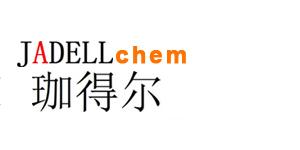Recombinant Human Epiregulin 是一种生长调节剂,是表皮生长因子 (EGF) 家族的成员。是一种肿瘤生长抑制因子,可诱导人表皮样癌 HeLa 细胞的形态变化。
Synonyms
rHuEpiregulin; EREG; EPR
Species
HumanSource
E. coli Accession
O14944 Gene ID
2069 Molecular Weight
Approximately 5.6 kDa AA Sequence
VAQVSITKCS SDMNGYCLHG QCIYLVDMSQ NYCRCEVGYT GVRCEHFFL Biological Activity
The ED50 is <2 ng/mL as measured by murine Ballb/c 3T3 cells, corresponding to a specific activity of >5 × 105 units/mg. Appearance
Lyophilized powder. Formulation
Lyophilized after extensive dialysis against PBS, pH 7.4. Endotoxin Level
<1 EU/μg, determined by LAL method. Reconstitution
Reconstitute the lyophilized recombinant Human Epiregulin (rHuEpiregulin) to 0.1-1.0 mg/mL using sterile distilled water or aqueous buffer containing 0.1 % BSA. Storage & Stability
Lyophilized recombinant Human Human Epiregulin (rHuEpiregulin) is stored at -20°C. After reconstitution, it is stable at 4°C for 1 week or -20°C for longer. It is recommended to freeze aliquots at -20°C or -80°C for extended storage. Shipping
Room temperature in continental US; may vary elsewhere. Background
The human epiregulin gene encoded a 163-residue putative transmembrane precursor containing an EGF-like domain in the internal segment, and the structural organization was similar to that of other members of the EGF family that bind to EGF receptors. Epiregulin has certain characteristics that are different from those of the classical members of the EGF family, EGF and transforming growth factor alpha, including mitogenic responses on several normal cells and binding to EGF receptors on epidermoid carcinoma A431 cells. Northern blot analysis shows the expression of human epiregulin to be mainly on peripheral blood macrophages and the placenta in normal tissues, and is highest on epithelial tumour cell lines in various types of tumour cell lines. Epiregulin is involved in certain physiological processes such as maintenance or development of normal cell growth, and the progression of carcinomas[1]. |



